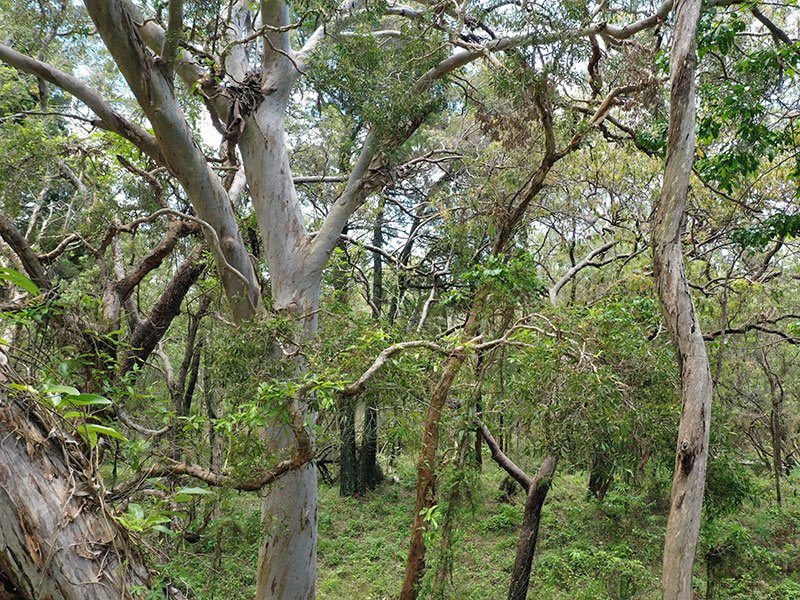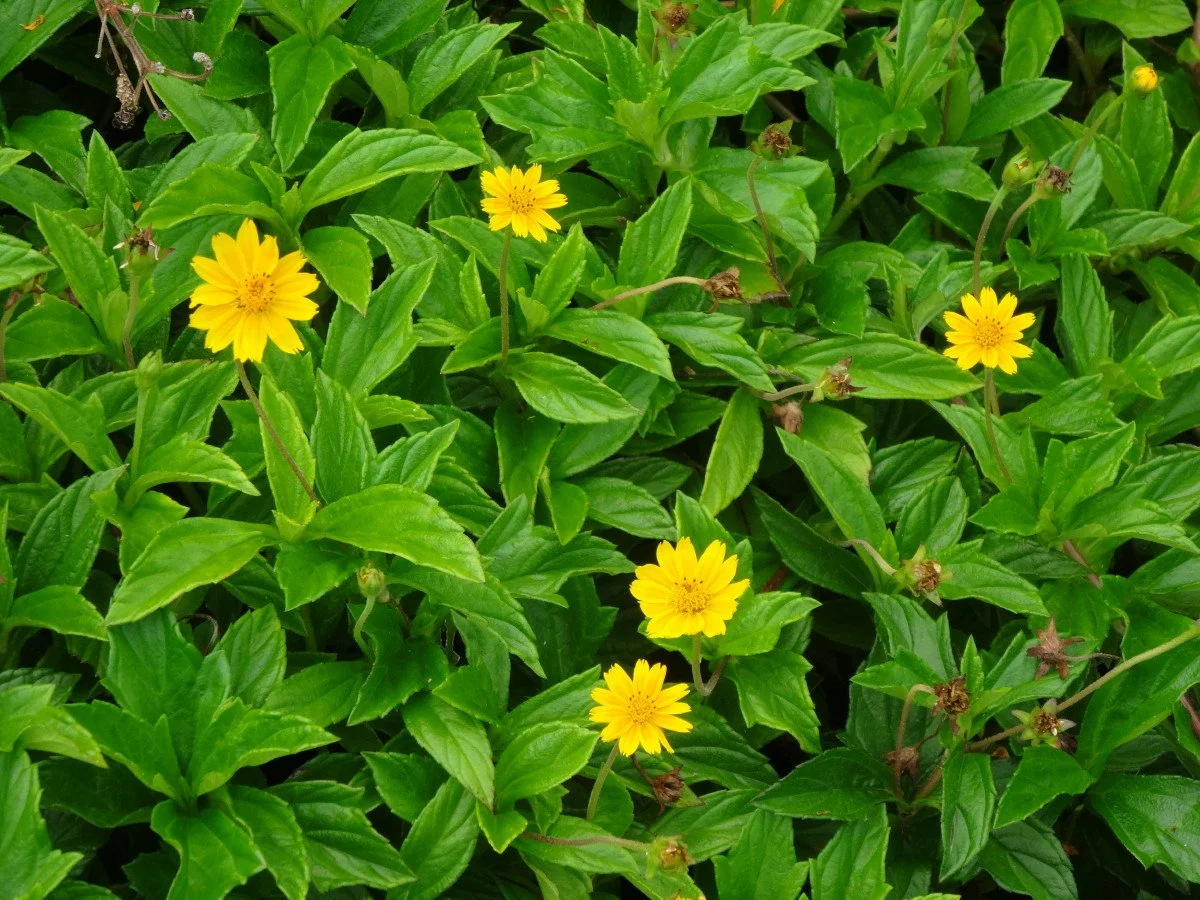
Invasive species on Coochiemudlo Island
An invasive species is an organism that is not indigenous or native to a particular area. To be called invasive, a species must adapt to the new area easily, and it reproduces quickly, harms property, the economy, and/or the native plants and animals of the region. (Ref: National Geographic Education.)
Info on this page:
Australia’s feral species and how to protect our biodiversity
For a national perspective on invasive species, listen to the excellent episode of Big Ideas (ABC Radio National), 16 May 2024, with speakers:
Costa Georgiadis (Host of ABC TVs Gardening Australia and landscape architect)
Andrew Cox (CEO of the Invasive Species Council)
Invasive animals
Red fire ants were first reported on Coochiemudlo Island in April 2024. Links to information about the appearance of the ants and how to report them are listed below.
The cane toad is listed on the Redlands City Council website as a non-invasive pest. However, many Coochiemudlo Island residents consider Cane Toads as invasive because:
conditions on Coochiemudlo Island are perfect for cane toads to breed rampantly. When it’s raining they get out and about and significant numbers are evident in parts of the island
cane toads are poisonous at all stages of its life cycle, and they eat larger animals including native frogs, smaller toads, small mammals and snakes
anecdotally, they kill baby curlews.
Fun Fact (from way back)
‘The island of Coochiemudlo, in Moreton Bay, has been proclaimed a reserve for the protection of native birds.’
From a short article in the Brisbane Telegraph, ‘Birds and Animals: Reserves Proclaimed’, Friday 21 November 1919.
Article sourced from Trove.
Invasive weeds
As stated on the Redlands City Council website, environmental weeds impact our community by:
Outcompeting native plant species
Damaging and changing native landscapes
Negatively impacting the habitat for native wildlife
Increasing the risk of wildfire
Toxicity to people, livestock and pets
Choking waterways and causing erosion
Reducing our enjoyment of local reserves, parklands, waterways and beaches.
The island’s two volunteer environmental groups, Coochiemudlo Coastcare Inc. and Bushcare, both organise monthly weed-pulling sessions on the north-eastern, eastern, and south eastern shorelines of the island.
Invasive weeds on Coochiemudlo Island
Most, if not all of the listed invasive weeds below were originally introduced onto Coochiemudlo Island by unsuspecting residents planting them as ornamental exotics into their gardens.
They are considered invasive because they have escaped the borders of gardens and are now found taking over significant areas of the island’s Emerald Fringe.
See more about invasive weeds on the Native Nursery website.
Why be concerned about invasive species?
Our world is dealing with environmental challenges. Since the industrial revolution, western socieities have driven economic growth and development around the world. We have a consumer mentality that saps up resources and contributes to land fill. Other factors include include land clearing, roadkills, and impacts from developing and building infrastructure and neighbourhoods. (State of the Environment Report, Australia, 2021)
Consequently ecosystems are under stress. What can we do about it? Locally, we can help protect all species that are native to our unique locality because they all contribute to the island’s ecosystem.
Healthy and balanced ecosystems are important
Ecosystems are the basis for life – they provide habitat, promote food chains, and control ecological cycles and processes.The degradation and collapse of an ecosystes can lead to the destruction of living organisms that are required for a healthy existence of what is sometimes called the web of life. (State of the Environment Report, Australia, 2021)
Extinctions
Populations of species on Australia’s islands tend to be small so they are vulnerable to extinction. (Threatened Species Recovery Hub, PDF)
Since colonisation, Australia has experienced a dramatic decline in ecosystem biodiversity. When the population of an indigenous species declines or becomes extinct in the environment, the ecosystem becomes unbalanced. This can trigger a chain reaction of decline of other species within the environment and therefore the ecosystem is compromised.
High rates of animal extinctions are due to a range of factors including bushfires, over-extraction of water, dryland salinity, land clearing, over-fishing, road kills, and invasive species. (‘The loss of an indigenous constructed landscape following British invasion of Australia: An insight into the deep human imprint on the Australian landscape’)
‘Australia is a world leader in species extinction and declines, largely due to invasive species.’ (Invasive Species Council Australia)
How can we help manage our local environments?
We can all do our bit!
-
If you’re a gardener on the island, it’s likely that you have wondered what is going to grow best in your garden. The volunteers at the Coochiemdudlo Island Native Nursery are weed and native plant experts, with many years of combined experience and learning propagating native plants that are indigenous to the island. Tube stock of indigenous natives and other natives are available to buy.
-
Help make sure we have fish for the future and be a responsible fisher by:
thinking about which fish you target
use the best fishing and handling techniques
only take home what you need.
See the Queensland Government’s rules about responsible fishing.
-
Be responsible on your watercraft
You must have a marine licence to operate a boat that has an engine power greater than 4.5kW.
Keep to the speed limit, and consider the marine life in Moreton Bay including turtles and dugongs. The following speed restrictions apply throughout Queensland whether speed limit signs for the area are present or not. A speed limit of 6 knots applies around Coochiemudlo Island, and within 30 metres of a:
person in the water
boat at anchor, moored, made fast to the shore or aground
jetty, wharf, boat ramp or pontoon in or on the waters.
-
On Coochiemudlo, we have two groups that work to keep the island’s environment and ecosystems.
-
Like other regions in Australia, pet owners are required by law to be responsible by preventing their pets roam the neighbourhood and bush.
Dogs that are off-leash in the neighbourhood can maim or cause stress to wildlife on the island, particularly our bush stone-curlews.
Cats are natural-born hunters and should be kept indoors at night and not roam beyond their fence during the day. They should be watched and prevented from killing birds and lizards if they are outside the home.
Read the Invasive Species Council fact sheet about the impact of cats in Australia (PDF).











